November 4, 2024 | 10:21 GMT +7
November 4, 2024 | 10:21 GMT +7
Hotline: 0913.378.918
November 4, 2024 | 10:21 GMT +7
Hotline: 0913.378.918

Mr. Chau Cong Bang, Deputy Director of the Department of Agriculture and Rural Development of Ca Mau Province. Photo: Trong Linh.
Mr. Chau Cong Bang, the Deputy Director of the Department of Agriculture and Rural Development of Ca Mau Province, emphasized the province's significant strengths in aquaculture. With over 280.000 hectares dedicated to farming and a coastline stretching 256 km, Ca Mau supports a variety of aquaculture systems, including intensive, super-intensive, extensive, and improved extensive models, as well as shrimp-rice and shrimp-forest combinations. The average annual shrimp harvest exceeds 230.000 tons, and for 2024, the target is set at 243.000 tons, with an anticipated annual export revenue of over 1.1 billion USD.
Despite these advantages, the shrimp industry in Ca Mau has been grappling with numerous challenges for an extended period, particularly due to the significant and sustained drop in raw shrimp prices. Recently, however, there has been a rebound in shrimp prices, which is seen as a hopeful sign that may invigorate the industry as it approaches the end of 2024.
According to Mr. Bang, while the shrimp export revenue for Ca Mau in 2023 exceeded 1 billion USD, the profits for local farmers are not substantial, even within the shrimp-rice model.
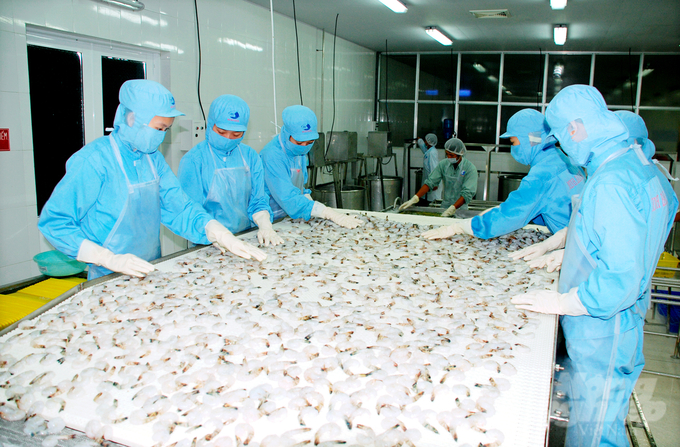
The seafood export revenue of Ca Mau in 2023 reached over 1 billion USD. Photo: Trong Linh.
As a result, it is crucial to invest in upgrading the infrastructure of aquaculture areas, with a particular focus on replacing traditional machinery and equipment with electric devices, including those powered by solar energy. This shift aims to reduce production costs and increase profitability for shrimp farmers.
“While we have the production volume, the profits for shrimp farmers and exporting processing enterprises are not meeting expectations, and in some cases, they are even incurring losses. This poses a significant challenge for the shrimp industry", Mr. Bang stated.
According to the leadership of the Department of Agriculture and Rural Development of Ca Mau Province, the province has recently collaborated with the Fisheries Department (MARD) to organize a workshop aimed at identifying the underlying causes of the current challenges faced by the shrimp farming sector. The goal is to develop appropriate solutions that will assist local shrimp farming communities and enhance the effectiveness of brackish water shrimp farming.
Mr. Tran Dinh Luan, the Director of the Fisheries Department (MARD), remarked that the Vietnamese shrimp industry is currently grappling with a range of significant difficulties and challenges, particularly related to disease management in aquaculture. Among the most pressing issues are diseases such as white spot syndrome, early mortality syndrome (EMS), and various bacterial infections, all of which severely affect both the productivity and quality of shrimp. He also noted that there are still many inadequacies in managing these diseases within shrimp farming ponds, which leads to a heightened risk of disease outbreaks. This risk is further exacerbated by the impacts of climate change.
"The influence of climate change is intensifying extreme weather events such as storms, floods, and droughts, which in turn affect water quality and make it challenging to maintain optimal farming conditions. Additionally, saltwater intrusion has a detrimental effect on the quality of water sources, which negatively impacts the health of the shrimp being farmed", Mr. Luan explained.
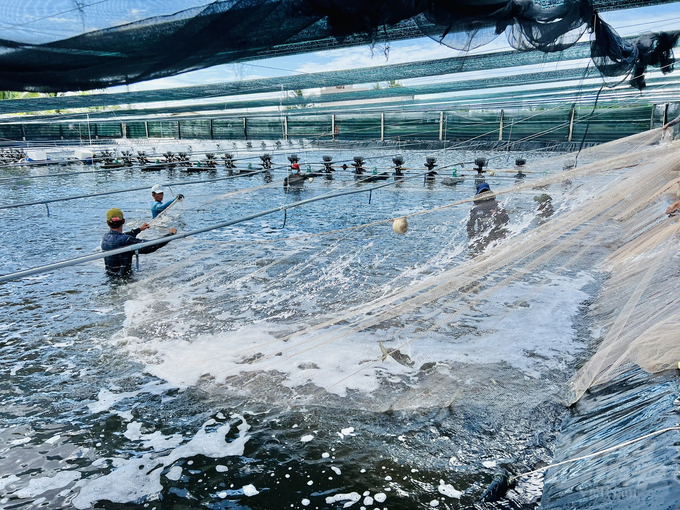
The production costs for shrimp in Vietnam remain quite high compared to countries like India, Ecuador, and Indonesia. Photo: Trong Linh.
Mr. Luan also pointed out that international competition and trade barriers are becoming increasingly pronounced. Countries such as India, Ecuador, and Indonesia have established robust shrimp industries that present strong competition. Additionally, the trade barriers and stringent quality standards set by major importing markets, including the United States, the European Union, and Japan, are tightening, particularly in terms of quality assurance, traceability, and food safety requirements.
In Vietnam, production costs - including feed and veterinary medicines - remain relatively high. Furthermore, the effectiveness of cost control measures has been limited, which means that the prices of Vietnamese shrimp are not competitive enough compared to those from other countries.
There are also significant obstacles in accessing new technologies and modern techniques. Many shrimp farmers still rely on traditional farming methods and lack the necessary investment in advanced technology and sustainable farming practices. This limitation hampers their ability to adopt innovative approaches for disease management, productivity enhancement, and environmental conservation. Moreover, the industry is experiencing a shortage of skilled labor with the expertise required to implement modern and sustainable shrimp farming practices, as well as to meet the demands of large export markets.
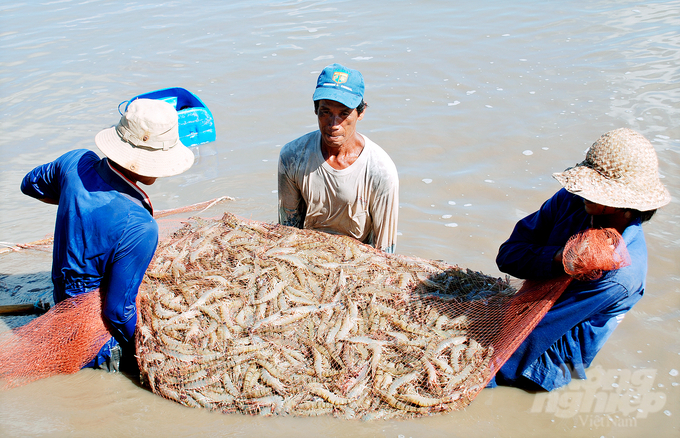
The goal of the shrimp industry is to ensure that productivity and output are in line with the profits of farmers and enterprises. Photo: Trong Linh.
According to Mr. Luan, increasing productivity and output must go hand in hand with ensuring profitability for farmers and enterprises. The low profits for shrimp farmers stem from various factors, with the primary issue being high production costs, an increase in disease outbreaks, and significant challenges in disease management for farmed shrimp. Unlike chickens or pigs, which can be housed in a single barn, shrimp farming involves numerous large ponds, and the existing infrastructure often has many shortcomings, making disease management particularly difficult.
Consequently, the Vietnamese shrimp industry must focus on improving quality while simultaneously reducing production costs to achieve a competitive edge in the global market.
In the first ten months of 2024, shrimp production in Ca Mau Province surpassed 200.000 tons, achieving 82.30% of the planned target and showing an increase of over 2% compared to the same period last year. Additionally, the export revenue from seafood reached 968 million USD, which is 87% of the target, reflecting a year-on-year growth of more than 12%.
As for the forecast for the final three months of the year, authorities warn that unfavorable weather conditions and environmental factors could lead to an increased risk of disease outbreaks in farmed shrimp. In light of this, they strongly recommend that farmers adhere closely to established farming protocols. This includes ensuring proper preparation of the farming ponds, selecting high-quality shrimp larvae, replacing chemicals and antibiotics with biological alternatives, and carefully choosing the appropriate timing and size for harvesting shrimp. Such measures are essential to maximize profitability and ensure the health and sustainability of the shrimp farming industry.
Translated by Phuong Linh
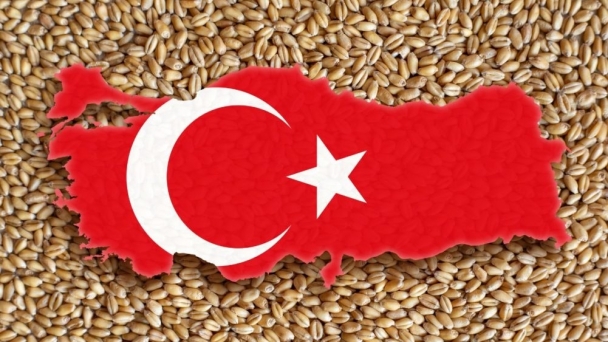
(VAN) Despite these factors, the FAS forecasts a 43% year-on-year decline in ending stocks for 2024-25 to 3 million tonnes.
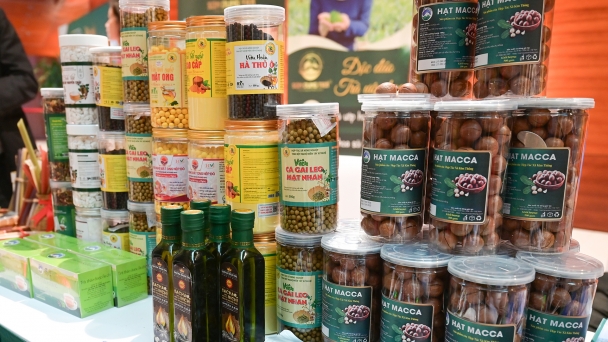
(VAN) Ninh Thuan and Ben Tre established effective connections and trade with Halal markets by exploiting the agricultural suitability.
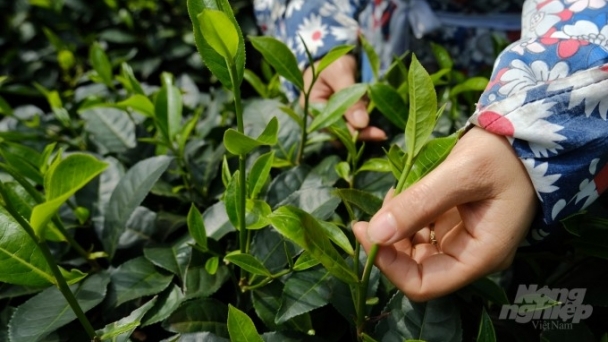
(VAN) However, in terms of value, Vietnam only ranks second, accounting for a proportion of 12.1%, much lower than the 39.6% of the largest tea supply market, Sri Lanka.
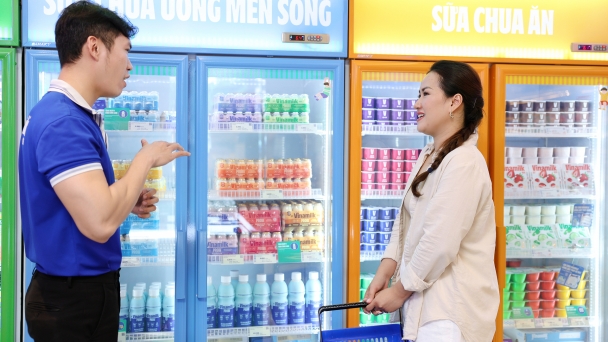
(VAN) In the first nine months of 2024, the foreign market has been described as the 'booster rocket' for Vinamilk, achieving nearly 16% growth and generating approximately 355 million USD for the company.
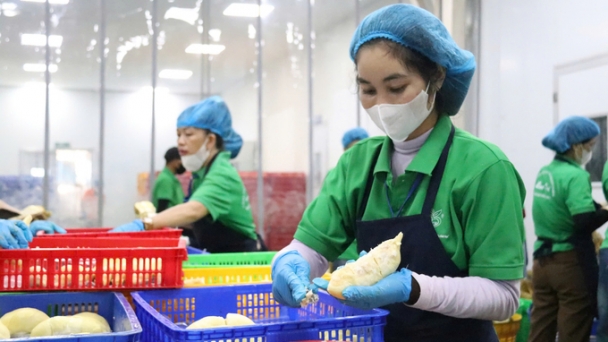
(VAN) At the MARD October press conference, Deputy Minister Phung Duc Tien confirmed that achieving an export turnover of 55 billion USD in agricultural, forestry, and fishery products this year is entirely feasible.
/2024/11/01/4040-0-nongnghiep-174036.jpg)
(VAN) In the first 9 months of 2024, Vietnam's cashew nut exports reached 543,500 tons, worth USD 3.15 billion.